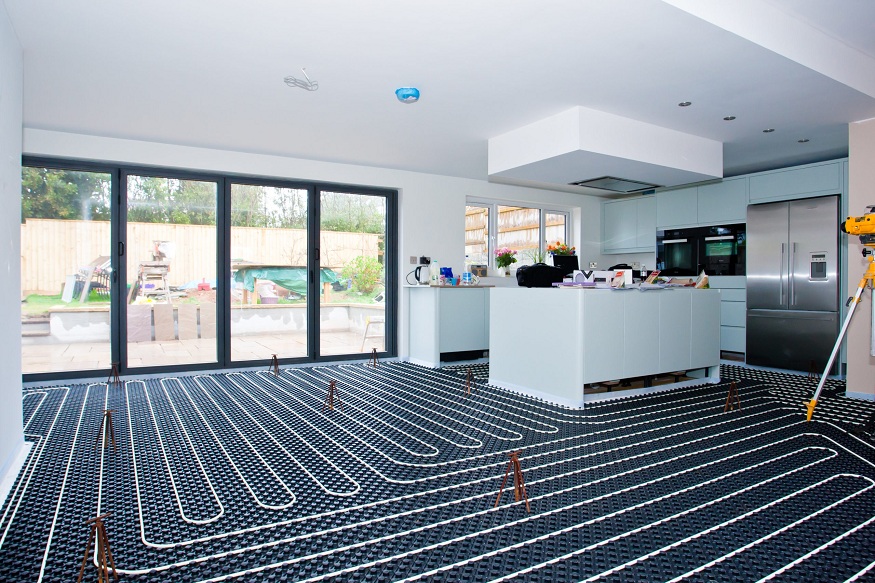
A Simple Guide to Underfloor Heating in Exeter
The UK has been experiencing extreme weather conditions, which people are finding difficult to cope with. One suggestion is that they move to a warmer climate, but what if you could stay in your home and enjoy the benefits of the much warmer temperature? Find out how underfloor heating can bring your home an impressive new look – just by making it more comfortable!
What is underfloor heating?
Underfloor heating is a system that heat the floor beneath your feet, instead of the air above. It’s often used in cold climates where the ground is too cold to stand on. There are two main types of underfloor heating: radiant and convection.
Radiant heating uses a metal plate or tube buried beneath the floor. The heat from the electrician’s wiring flows through this metal plate or tube and warms the floor below. Convection heating uses a series of fans to circulate warm air under the floor. Both systems work well in most cases, but they have their own advantages and disadvantages.
Radiant heating is cheaper to install than convection heating, but it can be less effective in cold climates. Convection heating is more expensive to install, but it can be more effective in cold climates. In general, it’s best to choose the type of underfloor heating that’s best suited for your specific needs.
Benefits of underfloor heating
Underfloor heating is a great way to keep your home warm in the wintertime, without having to use a lot of energy. Here are some of the benefits of underfloor heating in your home:
- It’s eco-friendly: Underfloor heating doesn’t produce any greenhouse gases, which means it has zero impact on the environment.
- It’s economical: Underfloor heating is more efficient than other forms of heating, meaning you can save money on your electricity bill.
- It’s comfortable: Underfloor heating warms up the entire floor, so you can stay warm even when you’re not near the heater.
- It’s versatile: You can choose to have underfloor heating in one or several rooms of your home, depending on your needs and preferences.
How to choose the right kind of floor heating?
If you’re thinking of installing underfloor heating in your home, there are a few things you need to consider before making a decision. Here’s a simple guide to help you choose the right kind of heating for your needs.
There are three main types of floor heating: radiant, convection, and forced-air.
Radiant floor heating uses heat radiation to warm the floor below. This is the most common type of floor heating, and it’s usually the cheapest option. Radiant heat is absorbed by materials like concrete and metal, so it can be difficult to evenly distribute warmth throughout a room. Radiant heating also requires close proximity to the heater, so it’s not ideal for large spaces.
Convection floor heating uses hot air moving around the room to warm the floor below. This type of heating is more efficient than radiant heat, but it can be less comfortable because colder air will move around more quickly than warm air. Convection heat is also harder to control than radiant heat, so it’s not ideal for small rooms or spaces with high ceilings.
Forced-air floor heating uses an inflow of air and heat through vents in the floor that push warm air into the room. This type of heating can be more effective than radiant heating, but it’s less efficient and requires the pipes to be installed in the floor, meaning it’s not a good choice for older homes. It’s also more expensive than other types of floor heating.
Do I need a specific type of underfloor heater?
Underfloor heating is a great way to keep your feet warm in the winter and comfortable in the summer. You can choose from many different types of underfloor heaters, but you don’t need to choose one type over the other. In fact, you can use a combination of underfloor heaters to get the perfect temperature for your home.
If you’re not sure whether or not you need an underfloor heater, read our simple guide to underfloor heating in Exeter.
Conclusion
Underfloor heating can be a great way to keep your feet warm in the colder months, and it’s also a great way to save energy. If you are looking to install underfloor heating in your home, we have put together a simple guide that will help you get started. We cover everything from the cost of installation to choosing the right type of underfloor heating unit for your needs. Hopefully, this guide has helped you gain some insight into what underfloor heating is and how it can benefit you. If you have any further questions or would like help getting started, don’t hesitate to reach out!


